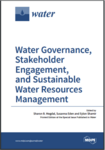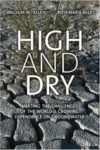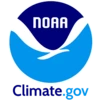Water Governance, Stakeholder Engagement, and Sustainable Water Resources Management

Sharon B. Megdal, Susanna Eden, and Eylon Shamir, editors
MDPI, 2017
The Special Issue of the journal Water titled “Water Governance, Stakeholder Engagement, and Sustainable Water Resources Management” has been published in book form. The Special Issue was edited by WRRC Director Sharon B. Megdal, Susanna Eden, WRRC Assistant Director, and Eylon Shamir, Hydrologic Research Center. A collection of 20 articles by experts in numerous fields related to water governance and management, the book offers research from a range of perspectives, geographic scales, and locations around the world. It focuses on the relationship of water governance practices and stakeholder engagement approaches to the development, evaluation, and adoption of solutions for sustainable water management. Reprints are freely accessible and printed copies may be purchased on the MDPI Books platform at http://www.mdpi. com/books/pdfview/book/327.
Price of Water 2017: Four Percent Increase in 30 Large U.S. Cities
by Brett Walton
Circle of Blue, May 18, 2017
In May, the Circle of Blue, a water news source, released the results of its annual survey of water pricing in U.S. cities. The survey looks at 30 large cities. Instead of trying to compare average household bills the study authors tracked the annual change in prices for three residential consumption scenarios: a family of four using 150, 100 or 50 gallons per person per day. They found that the average cost of residential drinking water service in the 100 gallons per person per day scenario increased four percent, the smallest annual increase since the first survey in 2010. The survey analysis notes that water utilities across the country are changing the way they charge for water to meet the simultaneous challenges of earning enough to cover costs and keeping water affordable for the poor, in an era of conservation and declining per capita sales. The changes in rates over time for each city surveyed can be viewed on the Circle of Blue web site at http://www. circleofblue.org/2017/water-management/pricing/pricewater-2017-four-percent-increase-30-large-u-s-cities/
High And Dry: Meeting the Challenges of the World’s Growing Dependence on Groundwater

by William M. Alley and Rosemarie Alley
Yale University Press, 2017
Because groundwater is largely unseen, the topic has been neglected by writers addressing a non-scientific audience. This is a shame, as groundwater is a vital resource that is shrinking due to pressures from a growing global demand and widespread contamination. Many more people from policy makers to the public at large need to be informed about groundwater, its nature, uses, and problems, as well as what can be done to solve them. This book fills that need with an engaging collection of stories from around the world in which the authors highlight the complex scientific, socioeconomic, and environmental issues associated with groundwater use and management. William M. Alley, an eminent groundwater expert, with his collaborator, science writer Rosemarie Alley, has produced a comprehensive and accessible introduction to the subject.
Energy-Water Policy Database
Office of Energy Policy and Systems Analysis, U.S. Department of Energy, 2017
U.S. Department of Energy (DOE), Office of Energy Policy and Systems Analysis (EPSA) is Beta testing a database of U.S. water policies and programs affecting energy systems. This draft database contains more than 1,700 policy entries, such as water quality standards affecting energy systems and surface and groundwater rights relating to power generation. The database can be searched using a number of filters including state, jurisdiction, and policy type. Users can download the entire database in spreadsheet format. The EPSA Office is inviting comments and feedback on this draft version of the database. https://energywaterpolicy.org/#
Perspectives on America’s Water
Nestle Water, June 2017
Perspectives on America’s Water, released in June 2017 by Nestlé Waters, is a unique national study that asked 4,381 American consumers in 17 states across the country and 375 experts in water, health, environment, and infrastructure about their perceptions of water safety, threats, and infrastructure needs. Consumers were representative of the national general population. Study authors found that clean drinking water is considered the most essential natural resource by more people than clean air or energy. The majority of consumers and experts agreed that water problems are a major problem in the United States. They also agreed that the United States needs a significant water infrastructure overhaul—59 percent of consumers and 58 percent of experts. All the results can be found at https://www.nestle-watersna. com/content/documents/pdfs/perspectives_on_americas_ water-june2017.pdf.
1981-2010 Climate Normals – Climographs

Climate.gov, National Oceanic and Atmospheric Administration
The National Oceanic and Atmospheric Administration – or NOAA – now provides graphs and tables of temperature and precipitation data representing the “normal” climate for weather stations across the United States. Simple graphs of Climate Normal data can be used to visualize the climate of a particular location at three time intervals: season, month, or day, and a few stations show hourly normals. The graphs are constructed from 30 years of observed weather data collected from each station. The current Climate Normals reflect the years 1981-2010. According to these data, the normal maximum temperature for the University of Arizona in Tucson in July is 101.70 F, compared to 106.10 F for the Phoenix airport. https://www.climate.gov/maps-data/dataset/1981-2010- climate-normals-climographs
Device Helps Save Shower Water
Climate.gov, National Oceanic and Atmospheric Administration
The AWR does not usually include information on commercial products, but we thought readers might be interested in this low-tech device for saving water while you wait for the shower water to warm up. The upsidedown umbrella collects water in a handy plastic container. Interested readers can find this product, called the Shower Flower, at http://www. nrgideas.com/revolutionary-new-product-the-shower-flower/.

